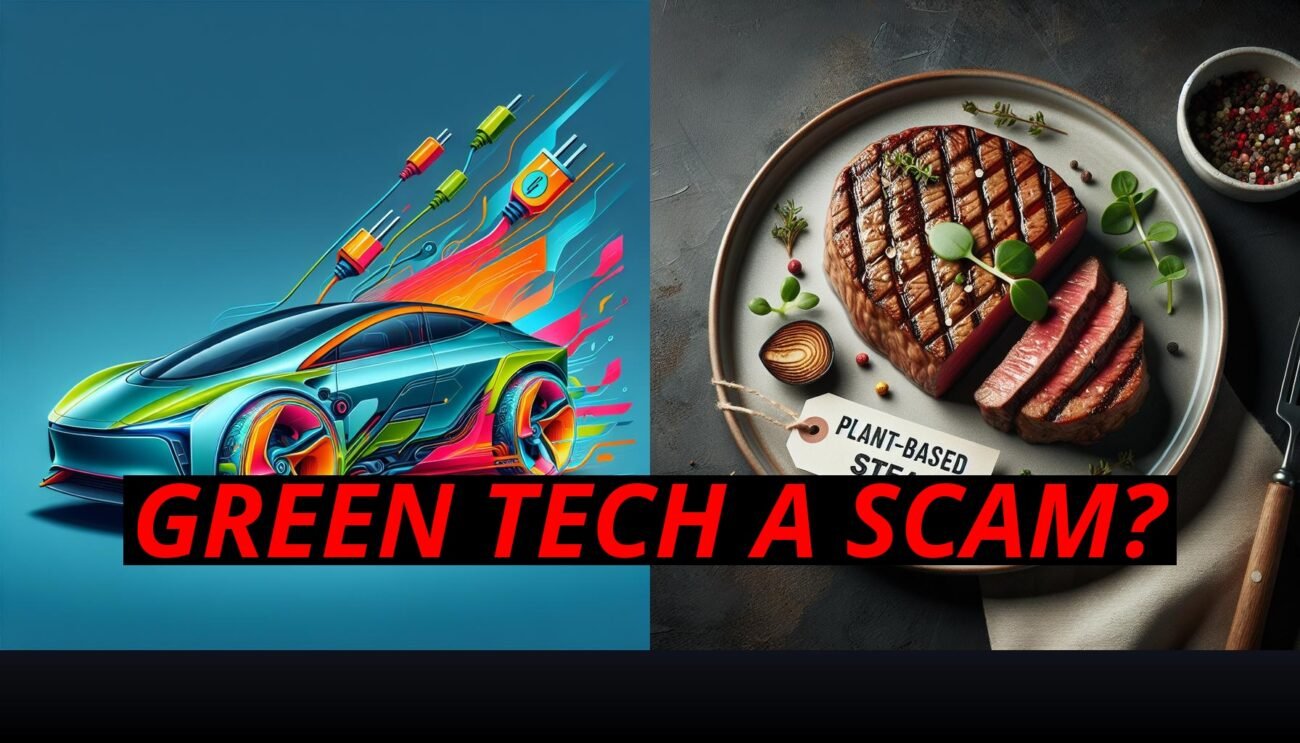Can Electric Cars Really Save The Planet?
Electric vehicles (EVs) are often seen as the key to solving climate change, marketed as the eco-friendly alternative to traditional gasoline-powered cars. Governments are pouring billions into subsidies, automakers are ramping up production, and consumers are being told that switching to electric is the best thing they can do for the environment. But here’s the truth: electric cars won’t save the planet on their own.
While EVs do reduce tailpipe emissions, they don’t address the root cause of many environmental issues—our society’s over-reliance on cars. If we truly want to make a lasting impact on the environment, we need to focus on reducing car dependency altogether, not just changing what powers the cars. And that’s where public transportation comes in. From buses and trains to light rail and subways, public transportation is the real solution for creating sustainable cities and reducing emissions on a massive scale.
The Limits Of Electric Cars: A Band-Aid Solution
Electric vehicles are often portrayed as a silver bullet for climate change, but their environmental benefits are often overstated. While they do eliminate tailpipe emissions, the production of electric cars—particularly the batteries that power them—comes with significant environmental costs.
Consider these limitations:
- Battery production: Electric vehicle batteries rely on lithium, cobalt, and other rare metals that require intensive mining. This process often leads to deforestation, water depletion, and habitat destruction in countries where these materials are extracted. The mining process also generates carbon emissions, which offset some of the climate benefits of driving electric.
- Energy source: EVs are only as green as the electricity used to charge them. In many places, coal or natural gas power the grid, meaning that the emissions saved on the road are just shifted to the power plants. Unless the grid is powered by renewable energy, the net environmental benefit of driving an electric car remains limited.
- Traffic congestion: Electric cars may help reduce emissions, but they don’t reduce the number of vehicles on the road. Traffic congestion, urban sprawl, and the land required for parking and highways all remain problems, whether the car is powered by gasoline or electricity.
In short, electric vehicles don’t solve the deeper issues related to urban planning and the environment. They may be an improvement over gasoline cars, but they aren’t the transformational solution we’ve been led to believe.
Public Transportation: The Real Green Solution
While electric cars get most of the attention, public transportation is the real game-changer when it comes to reducing emissions and making cities more sustainable. Unlike private cars—whether electric or gas-powered—public transportation moves large numbers of people with far less energy, reducing the overall number of vehicles on the road and improving urban life in the process.
Here’s why public transportation is a far better solution:
- Energy efficiency: Public transit systems like buses, subways, and trains use far less energy per passenger than private cars. A full bus or train can move dozens, if not hundreds, of people at once, cutting down on both fuel consumption and carbon emissions. Even electric buses and trains benefit from economies of scale, using less energy overall than hundreds of individual electric cars.
- Fewer cars, less congestion: Public transportation not only reduces emissions but also cuts down on traffic congestion. When more people rely on buses and trains, fewer cars clog the roads, leading to less gridlock, faster commutes, and fewer emissions overall. Reducing car dependency also frees up urban space for parks, green spaces, and more sustainable infrastructure.
- Accessibility: Unlike electric vehicles, which remain out of reach for many people due to their high upfront costs, public transportation is affordable and accessible. It provides a transportation option for people of all income levels, making it an equitable solution to environmental and urban challenges.
By shifting focus from individual car ownership to shared transit systems, cities can achieve significant reductions in emissions while also improving the quality of life for their residents.
Public Transit And Urban Design: Building Sustainable Cities
A major advantage of public transportation is that it encourages better urban planning. When cities prioritize public transit, they tend to design denser, more walkable neighborhoods that reduce the need for cars altogether. This not only benefits the environment but also makes cities more livable, with less time spent stuck in traffic and more green spaces for residents to enjoy.
Key benefits include:
- Walkable neighborhoods: Public transit hubs encourage the development of compact, walkable communities where people can live, work, and shop within a short distance. This reduces the need for long commutes and eliminates much of the urban sprawl that cars create.
- Less land use: Parking lots, highways, and sprawling suburbs require large amounts of land that could be better used for housing, parks, or public spaces. Public transportation reduces the need for this infrastructure, allowing cities to become more efficient and environmentally friendly.
- Air quality improvements: Fewer cars on the road mean better air quality in cities, reducing pollution and improving the health of residents. Public transportation helps cut down on harmful pollutants like nitrogen dioxide (NO2) and particulate matter (PM), which are linked to respiratory diseases.
Prioritizing public transit in urban design helps create sustainable cities that benefit both the environment and the people who live in them.
Electric Public Transit: The Best Of Both Worlds
While electric cars have limitations, the use of electric public transit offers the best of both worlds—zero emissions combined with the efficiency of mass transportation. Electric buses, trains, and light rail systems can significantly reduce a city’s carbon footprint without the environmental downsides of private electric cars.
Here’s how electric public transit can make a bigger impact:
- Fewer vehicles, more efficiency: One electric bus can replace dozens of private cars, reducing the overall number of vehicles on the road while using less energy per passenger.
- Renewable energy: Public transit systems can be powered by renewable energy sources, making them truly zero-emission. Many cities are already integrating solar and wind power into their transit systems, reducing reliance on fossil fuels and setting a model for the future.
- Less congestion, more mobility: Electric public transit not only cuts emissions but also reduces traffic congestion, making cities more mobile and efficient. With fewer cars on the road, travel times decrease, and the need for large road networks and parking spaces diminishes.
By investing in electric public transportation, we can create a greener future that benefits both the environment and urban development.
Conclusion: Public Transportation Is The Key To Real Change
While electric vehicles are often touted as the solution to climate change, they don’t address the deeper problems of car dependency, traffic congestion, and urban sprawl. The real path to environmental sustainability starts with investing in public transportation, which is more energy-efficient, reduces the need for cars, and encourages better urban planning.
Public transit isn’t just about reducing emissions—it’s about creating smarter cities that prioritize people over cars. If we’re serious about making real environmental change, we need to shift the conversation from electric cars to public transportation, focusing on solutions that will have a broader, more lasting impact on our cities and our planet.













